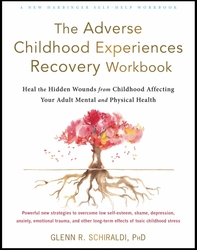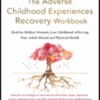Glenn R. Schiraldi, Ph.D. Psychology Today blog post, July 18, 2022
We’ll conclude our exploration of strategies that modify shame imprinted in childhood by describing three “top-down” strategies—or strategies that emphasize thinking. These can be tried once physical stress and emotional arousal are regulated. Again, please heed the warning to stop and enlist the aid of a trauma specialist if any of these strategies feel overwhelming.
Healing inner Dialogue
When stress is regulated—so that it is neither too high nor too low—calm, rational thinking is again possible. It’s possible to lay down compassionate and reasonable new thought patterns that replace the depressing, pessimistic thought patterns of shame. Examples of these negative thought patterns are:
- Something’s really wrong with me.
- I can’t do anything.
- I’ll never improve.
After calming the body and eliciting pleasant emotions, you might repeat slowly and with a kind, good-humored attitude the thoughts that people with a wholesome sense of self tell themselves (Schiraldi, 2016). For example, you might relax and repeat to yourself thoughts like these:
- I see myself as generally capable.
- I do some things quite well.
- Even though I’m imperfect, nevertheless I’m a worthwhile person.
- I’m quietly glad to be the person I am.
- I recognize and appreciate my strengths.
- Even though I’m imperfect, nevertheless I love myself.

How Would the World Be Different?
This is another cognitive (top down) technique that can be effective once stress arousal and emotions have been regulated and the left brain is back on line (Ulrich, 1992). This strategy encourages you to acknowledge from your wiser adult perspective your unique blend of strengths and weaknesses. It is curiously settling to realize that you, like everyone else, have that mix. No matter what your experience is and how you’ve been treated, at the core you are still infinitely worthwhile and full of potential. Accepting yourself with loving kindness—as a work in progress—is the secure basis for growth.

In writing, reflect on how the world would be different in a bad way if everyone were like you. For example, you might write that everyone would be reserved, lacking confidence at times, self-doubting, and so forth. Then write about how the world would be different in a good way if everyone were like you. Maybe you’d note that people would be kind and respectful of others, empathizing with their struggles, listening to each other’s pain, accepting of others’ faults, earnestly trying their best, and willing to help others. There would be no bragging or arrogance.
It is healing to acknowledge our mix of strengths and weaknesses with compassion and reasonable expectations for improvement, realizing that we, in our imperfections, are like all other people. It is also empowering to realize that alongside our weaknesses, we have unique ways to contribute to a better world. Track how it feels to notice this.
Prepare for the Return of Shame
There is also security in preparation. Being imperfect, when do we learn anything completely or once and for all? You’re likely to encounter experiences that are shaming and/or trigger old shameful emotions. So it’s valuable to anticipate such experiences and have a plan in place for when they occur. This strategy, inspired by Williams and Poijula (2013), asks you to plan what you will do when:
1.You’re around a person who tries to shame you. For example:, I can:
- Look at that person with compassion, realizing that their own shame is probably causing them to act that way.
- Smile and calmly walk away.
2. You feel shame. For example, I can tell myself and be willing to believe:
- It’s just a memory remnant from a difficult time.
- Feelings come and go. Shame is not a reflection of my worth.
- Even though I’m feeling shame, nevertheless I’m a worthwhile person.
3. Shameful feelings persist. For instance, I can nurture myself by:
- Taking a warm shower
- Going for a pleasant walk
- Smiling as I remember my worthwhile nature
- Repeating self-compassion statements (such as: “This is a difficult moment”; “Everyone suffers at times”; “May I bring compassion to this moment”)
- Journaling about it
The last three blogs have described a battery of skills that neutralize and rewire shame from childhood. Like playing the piano or golf, these skills improve with repetition, which more strongly imprints the new neural pathways that are formed. This completes the articles related to rewiring unpleasant memories related to adverse childhood experiences. Future articles will address ways to help you move forward to a more positive, satisfying way of living.
References
- Schiraldi, G. R. (2021). The Adverse Childhood Experiences Recovery Workbook. Oakland, CA: New Harbinger Publicaitons. (Scripts for rewiring shame)
- Schiraldi, G. R. (2016). The Self-Esteem Workbook, 2nd ed. Oakland, CA: New Harbinger Publications.
- Williams, M. B., & S. Poijula. (2013). The PTSD Workbook, 2nd ed. Oakland, CA: New Harbinger Publications.
- Ulrich, W. L. (1992). The Temple, Psychotherapy, and the Traditions of the Fathers. Issues in Religion and Psychotherapy 18 (1), article 5.
About the Author
Glenn R. Schiraldi, PhD, has served on the stress management faculties at The Pentagon, the International Critical Incident Stress Foundation, and the University of Maryland, where he received the Outstanding Teacher Award in addition to other teaching/service awards. His fourteen books on stress-related topics have been translated into seventeen languages, and include The Adverse Childhood Experiences Recovery Workbook, The Self-Esteem Workbook. The Resilience Workbook, and The Post-Traumatic Stress Disorder Sourcebook. The founder of Resilience Training International (www.ResilienceFirst.com), he has trained laypersons, emergency responders, and clinicians around the world on the diverse aspects of stress, trauma, and resilience.
Photo Credits
- FG Trade/istockphoto
- Prostock-Studio/istockphoto
- dustanpetrovic





Comments (0)